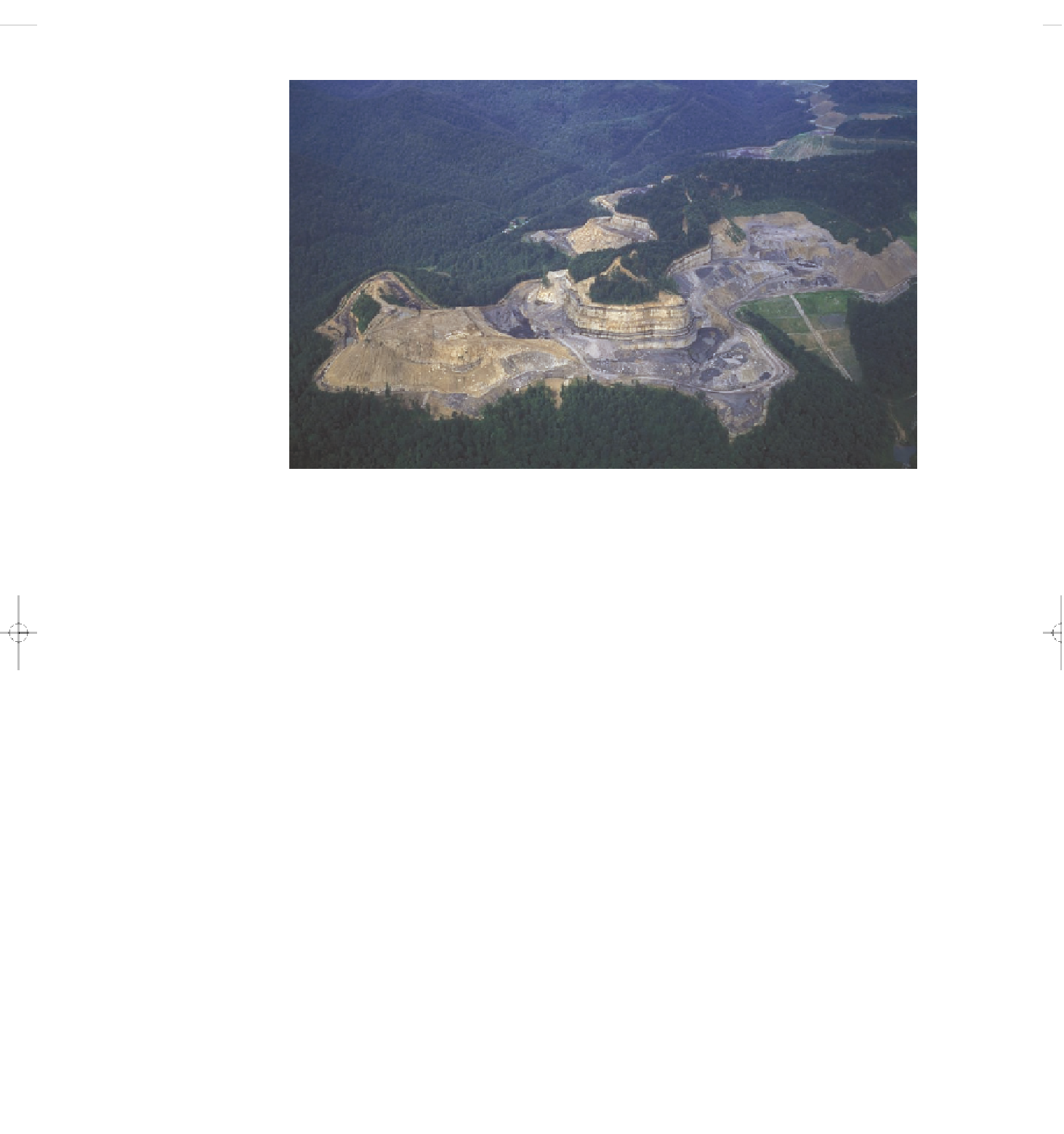Environmental Engineering Reference
In-Depth Information
Figure 12-11
Natural
capital degradation:
mountaintop coal min-
ing operation in West
Virginia. The large
amount of resulting
debris is deposited in
the valleys and streams
below.
ing to the U.S. Environmental Protection Agency
(EPA), mining has polluted about 40% of western
watersheds.
Mining can also result in emission of toxic chemi-
cals into the atmosphere. In the United States, the min-
ing industry produces more toxic emissions than any
other industry—typically accounting for almost half of
such emissions.
Finally, some forms of wildlife can be exposed
to toxic mining wastes when they leak from holding
ponds.
12-5 ENVIRONMENTAL EFFECTS
OF USING MINERAL RESOURCES
Science: Environmental Impacts
of Nonrenewable Mineral Resources
Extracting, processing, and using mineral resources
can disturb the land, kill miners, erode soils, produce
large amounts of solid waste, and pollute the air,
water, and soil.
The mining, processing, and use of mineral resources
take enormous amounts of energy and often cause
land disturbance, soil erosion, and air and water pollu-
tion (Figure 12-12).
Mining can harm the environment in a number of
ways. One type of damage is
scarring and disruption of
the land surface.
The Department of the Interior esti-
mates that at least 500,000 surface-mined sites dot the
U.S. landscape, mostly in the West. Cleanup cost esti-
mates are in the tens of billions of dollars.
Another problem is collapse of land above under-
ground mines. Such
subsidence
can cause houses to tilt,
crack sewer lines, break gas mains, and disrupt ground-
water systems.
Toxin-laced mining wastes
can be blown or de-
posited elsewhere by wind or water erosion.
Acid
mine drainage
occurs when rainwater seeping through
a mine or mine wastes carries sulfuric acid (H
2
SO
4
,
produced when aerobic bacteria act on iron sulfide
minerals in spoils) to nearby streams (Figure 12-1)
and groundwater. This contaminates water supplies
and can destroy some forms of aquatic life. Accord-
Science: Life Cycle of a Nonrenewable
Metal Resource
Metal ores are extracted from the earth's crust,
purified, smelted to extract the desired metal, and
converted to the desired products.
Figure 12-13 depicts the typical life cycle of a metal
resource. It begins with extracting ore from the earth's
crust.
Ore typically has two components: the
ore mineral
containing the desired metal and waste material called
gangue
(pronounced “gang”). Removing the gangue
from ores produces piles of waste called
tailings.
Parti-
cles of toxic metals blown by the wind or leached from
tailings by rainfall can contaminate surface water and
groundwater.
After removal of the gangue,
smelting
separates
the metal from the other elements in the ore mineral.
Without effective pollution control equipment, smelters
emit enormous quantities of air pollutants, which dam-

